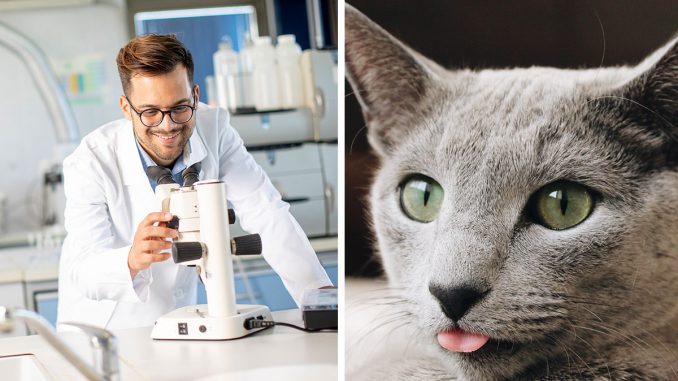
If you’re a cat lover, you know that one of the most relaxing sounds is your feline friend producing a soft, vibrating noise as you stroke them on your lap. Up until today, the mechanism behind domestic cats’ characteristic purring sounds remained unknown.
A new study published in the journal Current Biology has finally revealed the mystery of how cats emit their soothing low-frequency sounds. The investigation found that cats have “pads” embedded in their vocal cords, which add an extra layer of tissue that allows them to generate low-frequency vocalizations.
Additionally, the study revealed that the larynx or “voice box” doesn’t need any input from the brain to produce these sounds.
A recent study has concluded that cats possess “pads” in their vocal cords that allow for their characteristic low-frequency sounds to happen
Image credits: BGStock72
Image credits: photocreo
“Purring has historically had a complex, nonscientific explanation,” said Bonnie Beaver, a veterinary scientist at Texas A&M University. As she explained, theories devised in the past to explain this phenomenon weren’t actually tested.
The vibrating domestic cat noises have long puzzled scientists given that the low frequency at which they are produced—between 20 and 30 hertz (Hz)—is usually only observed in larger mammals with longer vocal cords, like elephants.
The sound frequencies are “far below even than lowest bass sounds produced by human voices,” study co-author Christian Herbs said.
The low-frequency sounds—between 20 and 30 hertz (Hz)—involved in purring are typically only observed in larger mammals, like elephants
Image credits: alexandrabeganskaya
To conduct their investigation, scientists removed the larynges from eight domestic cats that had been euthanized because of terminal disease. The studies were carried out with the full consent of their owners.
Investigators isolated the felines’ larynxes, pinched the vocal cords together, and pumped warm air through them. After all eight larynxes vibrated, they discovered that the sound was produced without any muscle contractions or neural input.
Just like meowing and hissing, purring is a passive phenomenon that occurs automatically.
The investigation has also revealed that purring occurs without muscle contractions or brain input
Image credits: nina_p_v
This challenged previous theories that held that purring occurred when cats actively contracted and relaxed their laryngeal muscles to emit their vibrating noise.
The researchers behind the study, who work at the University of Vienna, described their findings as a “great surprise” and a “clear indicator” that the phenomenon needs further research.
Cat lovers shared their thoughts on the exciting new findings
The post Scientists Have Figured Out How Cats Can Make Purring Sounds, And The Discovery Is Purr-fect first appeared on Bored Panda.
